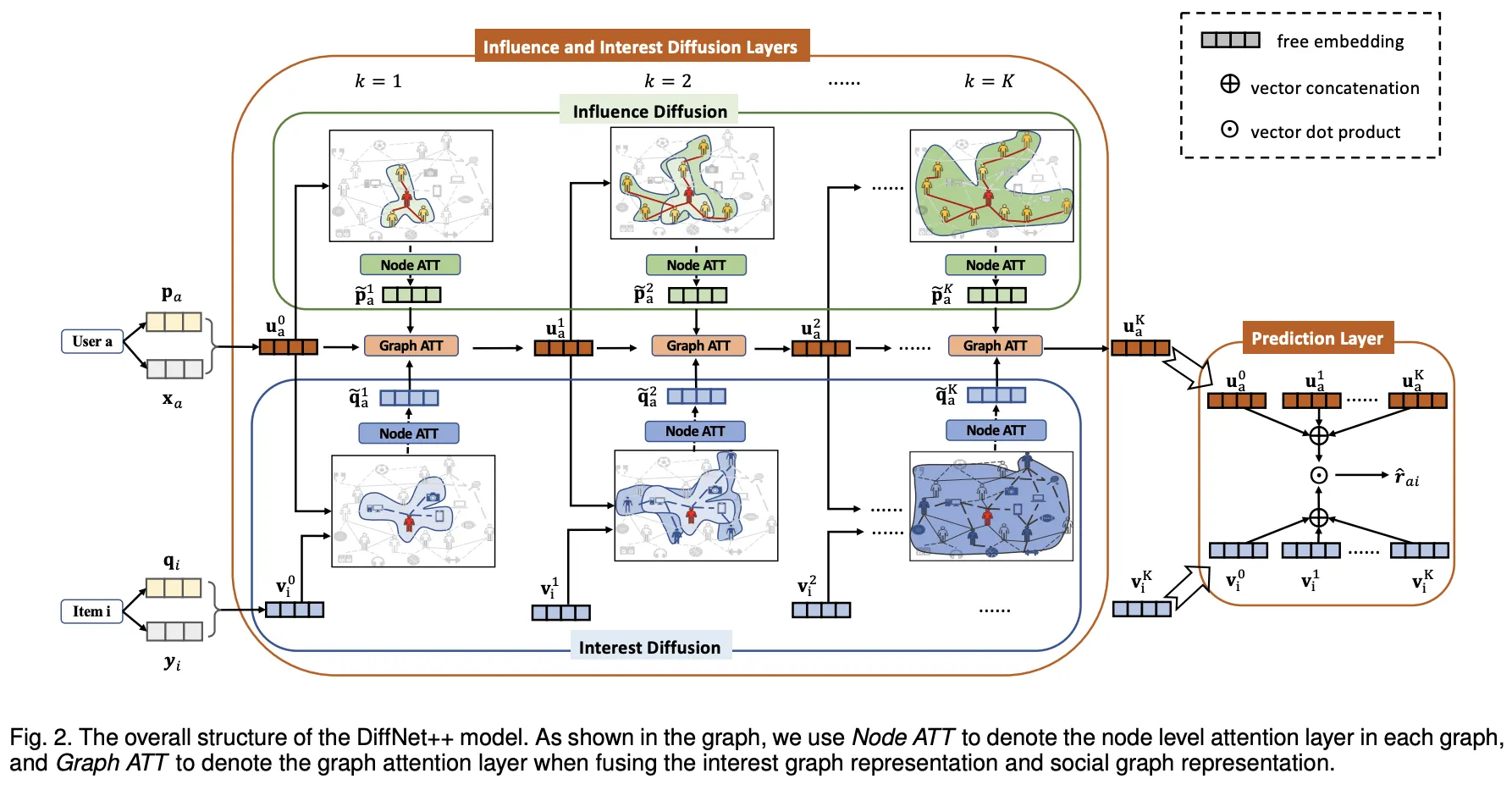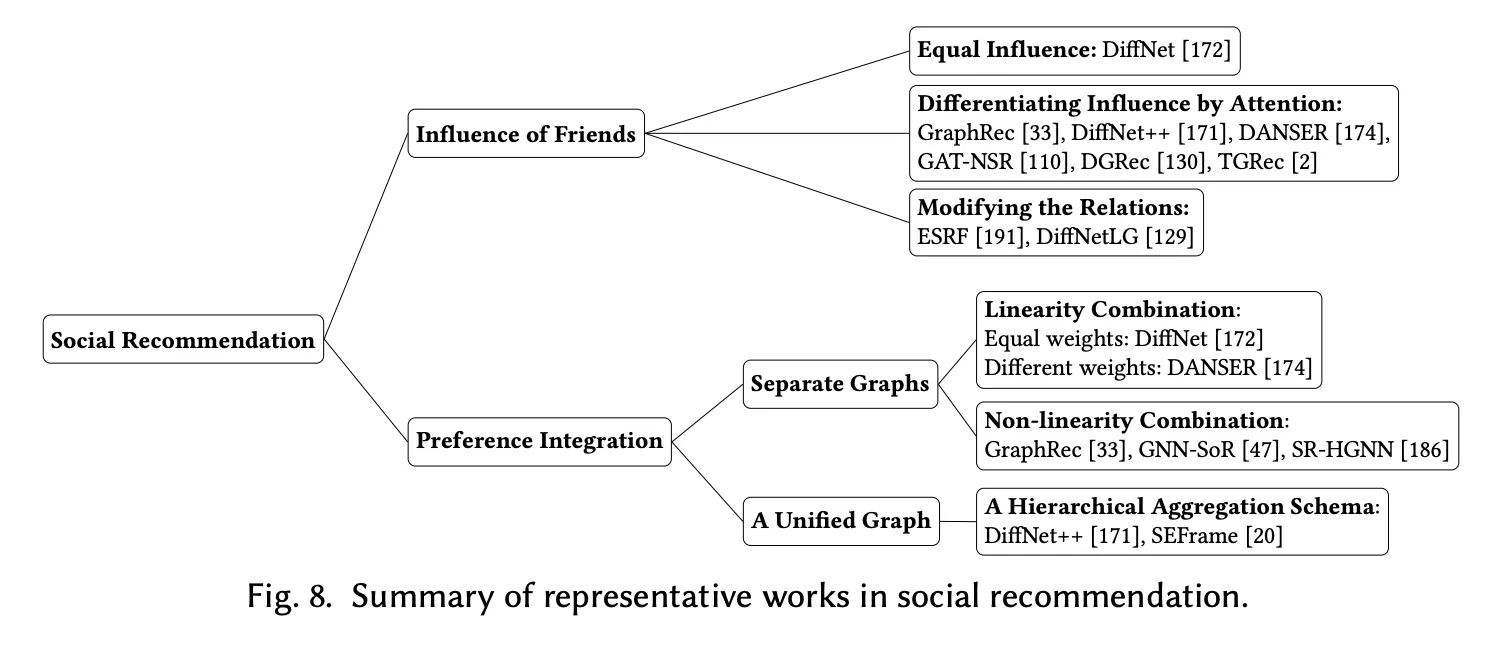Social Recommender System(SRS)
•
SNS와 같은 online social networks 등장
→ 유저의 특징을 보다 잘 모델링 하기 위해, 이웃(neighbor, 팔로워, 친구)들의 정보 활용 연구 ↑
•
SRS 연구의 기본 가정
◦
relationship을 가진 유저들은 유사한 representation을 가진다
◦
social influence theory : connected people would influence each other
•
GNN 관점
◦
각 유저와 직접적인 관계 있는 이웃의 정보만 활용
→ modeling the first-order neighbors of each other
→ 친구의 친구도 유저에게 영향을 주지만, 이러한 정보를 반영하지 못함
◦
high-order influence(social information) 반영할 수 있는 GNN 활용 연구 활발
•
GNN 관련 연구의 두 주요 이슈
1.
Influence of Friends : 친구들이 모두 같은 영향을 주는가? 그렇지 않다면 각 친구의 영향력을 어떻게 구별?
2.
Preference Integration : ‘유저-친구’, ‘유저-상품’ 두 가지 관계에 대한 정보를 어떻게 통합할 것인가?
5.1 Influence of friends
•
일반적으로 social graph는 친구 여부 정보만 포함 / 얼마나 가까운 사이인지는 모름
•
DiffNet : 모든 관계 동등하게, 실제 관계 반영 x
•
Attention mechanism : 친구의 서로 다른 영향력 반영
◦
DGRec : RNN, Graph-attention NN 이용 / dynamic users’ behaviors 모델링, current interests 기반으로 친구의 영향력 반영
◦
ESRF, DiffNetLG …
5.2 Preference Integration
◦
Users in SRS - two types of relationships
▪
user-item interactions
▪
social graph (user-user)
◦
이러한 social 정보를 통합해 user preference representation 잘 추출하기 위한 두 개의 strategies
1.
separate
a.
장점
i.
이분 그래프(user-item)와 homogeneous graph(social network) 각각에 특화된 GNN method 사용 가능
b.
통합 방법
i.
linearity combination : sum-pooling(DiffNet), weight sum(DANSER)
ii.
non-linearity combination : MLP(concat vector)
2.
unified
a.
장점
i.
통합된 네트워크로 social influence diffusion과 user-item interest diffusion이 유저의 선호를 동시에 반영
b.
예
i.
DiffNet++ : two-level attention network
•
아직 어떤 게 더 좋은 지 모름



